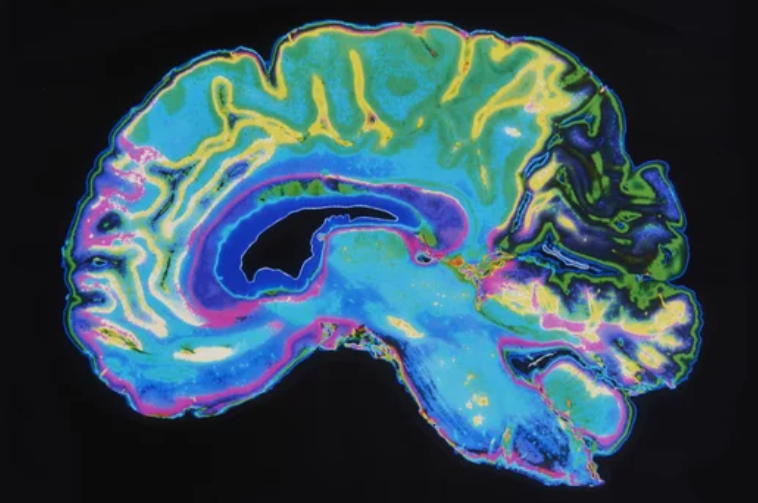Liver disease is a growing global health concern, encompassing conditions such as non-alcoholic fatty liver disease (NAFLD), cirrhosis, hepatitis, and liver cancer. Early detection and accurate staging are critical for improving patient outcomes and guiding effective therapy.
Traditionally, liver disease evaluation relied on biopsy, ultrasound, and CT scans, each with limitations—ranging from invasiveness and sampling errors to limited sensitivity for subtle tissue changes. Magnetic Resonance Imaging (MRI) is transforming hepatology by providing non-invasive, high-resolution, and quantitative insights into liver structure, function, and metabolism.
Advanced MRI techniques now allow clinicians to detect disease earlier, monitor progression, and tailor treatment plans, positioning MRI as the cornerstone of modern liver care.
Why MRI Is Essential in Hepatology
MRI offers several advantages over conventional imaging modalities in liver disease:
- Radiation-Free Imaging: Safe for repeated assessments, crucial for chronic conditions.
- Superior Soft Tissue Contrast: Differentiates healthy tissue from fibrosis, fat, or tumors with high precision.
- Quantitative Assessment: Measures liver fat, iron content, and fibrosis non-invasively.
- Functional Insights: Evaluates perfusion, biliary flow, and tissue metabolism.
These capabilities make MRI an indispensable tool for early diagnosis, risk stratification, and longitudinal monitoring in hepatology.
MRI in Detecting Liver Fat and Steatosis
Non-alcoholic fatty liver disease (NAFLD) is a leading cause of chronic liver disease worldwide. Early detection is vital to prevent progression to non-alcoholic steatohepatitis (NASH) or cirrhosis.
MRI Applications Include:
- Proton Density Fat Fraction (PDFF): Provides precise quantification of liver fat content, outperforming ultrasound and CT.
- Non-Invasive Screening: Detects fatty liver in asymptomatic patients, enabling lifestyle or pharmacologic interventions.
- Monitoring Response to Therapy: Tracks fat reduction during dietary, exercise, or medical interventions.
MRI enables accurate, repeatable assessment without the risks associated with invasive biopsy, making it the preferred method for early fatty liver evaluation.
MRI for Fibrosis and Cirrhosis Assessment
Liver fibrosis and cirrhosis represent advanced stages of chronic liver disease, often leading to liver failure or cancer if untreated. MRI has become a critical tool for staging and monitoring fibrosis.
Techniques Include:
- Magnetic Resonance Elastography (MRE): Measures liver stiffness to quantify fibrosis non-invasively with high accuracy.
- T1 and T2 Mapping: Detects subtle tissue changes associated with early fibrosis or inflammation.
- Diffusion-Weighted Imaging (DWI): Identifies microstructural changes and differentiates healthy from diseased tissue.
These techniques reduce the need for repeated liver biopsies, providing a safer and more comprehensive evaluation of liver health.
MRI in Liver Tumor Detection and Characterization
MRI is invaluable in diagnosing primary liver cancers such as hepatocellular carcinoma (HCC) and metastatic lesions.
- High-Resolution Imaging: Differentiates benign lesions from malignant tumors.
- Dynamic Contrast-Enhanced MRI: Assesses tumor vascularity and perfusion, aiding in staging and treatment planning.
- Diffusion-Weighted Imaging: Detects small or early-stage tumors invisible on ultrasound or CT.
- Liver-Specific Contrast Agents: Highlight lesions for precise localization and characterization.
MRI not only detects liver tumors early but also guides surgical planning, ablation, or transplant evaluation, improving patient survival rates.
Functional MRI for Liver Disease Monitoring
Beyond structural imaging, MRI provides functional and metabolic insights into liver health:
- Perfusion MRI: Evaluates blood flow changes in cirrhosis or portal hypertension.
- Hepatocyte Function Assessment: Measures uptake and clearance of liver-specific contrast agents to assess functional reserve.
- Iron Quantification: Detects and monitors iron overload in hemochromatosis or transfusion-related conditions.
- Non-Invasive Monitoring: Enables repeated measurements without risk, critical for chronic liver disease management.
Functional MRI transforms hepatology from a purely anatomical assessment to a dynamic evaluation of liver performance.
MRI in Pediatric Hepatology
Children with liver disease, including biliary atresia, congenital malformations, or metabolic disorders, benefit significantly from MRI:
- Safe Imaging: Avoids repeated radiation exposure from CT scans.
- Detailed Structural Assessment: Detects congenital abnormalities in liver and biliary ducts.
- Functional Analysis: Monitors liver perfusion and metabolism during growth and development.
MRI allows pediatric hepatologists to track disease progression and treatment response without compromising long-term safety.
AI and MRI: Precision in Liver Disease Management
Artificial intelligence is enhancing MRI’s role in hepatology by enabling:
- Automated Segmentation: Rapidly identifies liver, lesions, and vascular structures.
- Quantitative Analysis: Calculates fibrosis, fat, and iron content with high accuracy.
- Predictive Modeling: Forecasts disease progression and response to therapy.
- Longitudinal Monitoring: Tracks changes over time for personalized care planning.
AI integration makes liver MRI faster, more accurate, and predictive, enabling clinicians to deliver precision hepatology at scale.
Challenges and Future Directions
Despite its benefits, MRI in liver disease faces challenges:
- High Cost and Accessibility: Advanced MRI and elastography systems require significant investment.
- Expertise Needs: Interpretation of functional and quantitative imaging requires specialized training.
- Scan Time and Patient Comfort: Longer scans can be challenging for some patients, though accelerated imaging techniques are improving this.
Future innovations include portable MRI systems, ultra-fast imaging protocols, AI-assisted diagnostics, and hybrid imaging modalities, expanding access and transforming liver disease management.
Conclusion: MRI as the Future of Hepatology
MRI is reshaping hepatology by offering non-invasive, highly detailed, and functional insights into liver health. From early detection of fatty liver and fibrosis to tumor characterization, functional assessment, and pediatric applications, MRI is becoming the central tool for modern liver care.
With AI integration, quantitative imaging, and advanced contrast techniques, the future of liver disease management is moving toward precision, safety, and proactive intervention. MRI is not just imaging the liver—it is imaging the future of hepatology, enabling better outcomes, informed treatment decisions, and improved quality of life for millions of patients worldwide.
Also Read :
